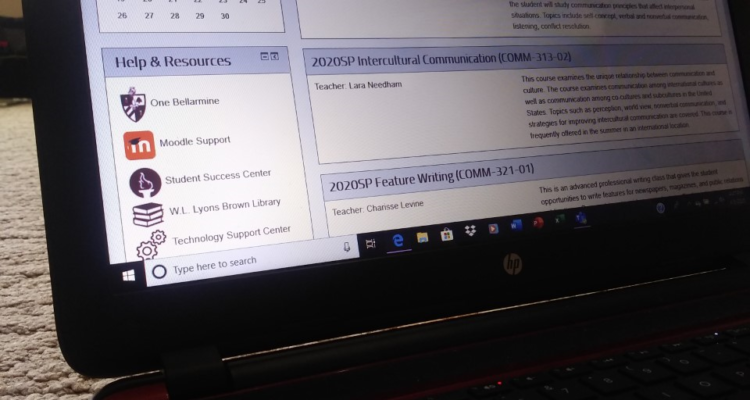By: Katelyn Norris
Sitting in my home, completing assignments and endlessly staring at my computer is not how I expected my spring semester to end; I imagine everyone feels the same. The transition to online classrooms had an impact on both students and staff. Professors must gather content and disseminate it to their students. Students must learn from worksheets, PowerPoints and the textbooks they never opened. With all of this work, many students feel the same way I do: we are not learning from this form of education.
In the article, “Everybody Ready for the Big Migration to Online College? Actually, No” Kevin Carey makes a point that the issue with online classes is not accessibility but rather how well designed the digital class may be. Colleges have steadily been building to have a greater online course load for years, with one-third of college students enrolling in online courses, according to Carey’s article.
“Ideally, online education accomplishes at least three distinct things: distance, scale and personalization. All of them will be hard for colleges to manage in the coming weeks,” Carey wrote.
This transition has been a difficult one. Communicating with professors is easy because emails can be sent with a click of a button. Having content to learn is simple; professors upload or talk about it with students through video chats or other means of communication. But the true problem for me lies in the assignments – I do them for completion not learning.
Connor Clare, a Bellarmine senior, said he feels the same way. He participates in audio lectures and video chats for almost all of his courses. However, this type of learning isn’t learning at all for most students.
“I feel like the main task is to just get everything done rather than to understand it,” Clare said. “It doesn’t help that now classes are online many of my teachers have extended their lecture time and added more activities…I feel even more busy than I did when I was going to class.”
This is a reoccurring theme in my new normal. I complete all my tasks and readings only for several more assignments to be thrown my way. This style of teaching isn’t what I’m used to, and it isn’t allowing for me to gain knowledge. And I think this is where to problem occurs; most students have become comfortable with in-person teaching. We haven’t adapted to this new style.
Kevin Thomas, associate professor in Bellarmine’s Annsley Frazier Thornton School of Education, said students have grown accustomed to in-person teaching. The stress of our current situation, compounded by the change to this learning format, could have an impact on students, Thomas said.
“Online instruction is different than face-to-face, so I am sure that has impacted learning for some students,” Thomas said. “One reason students come to Bellarmine is because they want the individualized attention and instruction they receive in the classroom. While that can be replicated to some degree in the online format, it is not the same.”
I like my lessons being personalized for me and being able to talk to my professors before and after class. I miss the human connection just as much as I miss hearing lectures.
Reed Sparta, a Bellarmine junior, isn’t a big fan on the online transition. Sparta said she misses the interactions in the classroom.
“I do better when I am in a classroom setting and I have a set scheduled to go by. I enjoy the classroom setting more because you are face to face with professors and it is easier for me to ask questions about the material,” Sparta said.
Because of the overwhelming nature of the transition and the loss of the intimacy of the classroom, students are struggling to learn.
Dr. Kristin Cook, the associate dean of the Annsley Frazier Thornton School of Education, said this transition is all about maintaining balance. Cook emphasized the importance of students and staff supporting one another through the change.
“Flexibility on everyone’s part is key, and the hope that this experience will lead to deepening knowledge of best practices in online learning spaces, increasing equitable access and opportunities for students and expanding collective responsibility for learning,” Cook said.
Cook is right. We need to be flexible. It’s about understanding why we feel we’re not learning. Is it because this isn’t what we’re used to? Is it the content? Our learning style? It could be a number of these things, or it could be all of them. Learning to adapt is the best way to deal with this.
It’s all about finding balance. When I feel as if I am not learning in our current situation, I take a break. I stop it all and give myself room to breathe and time to think. I have emailed professors for clarity in an attempt to understand content. I haven’t adjusted too well, but I am trying my best to actually learn again.
Jessica Ivy, an associate professor in the Annsley Frazier Thornton School of Education, explains that despite all of the barriers and changes, students still are gaining knowledge.
“All of our students are still learning. They are learning in different spaces, using different tools, and often at different times than they anticipated, but learning is still taking place,” Ivy said.

